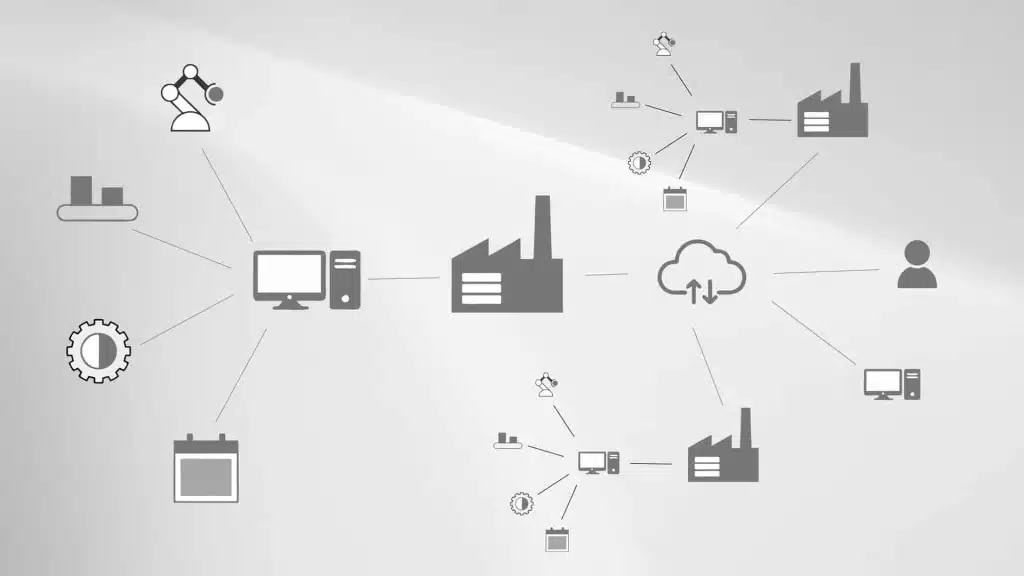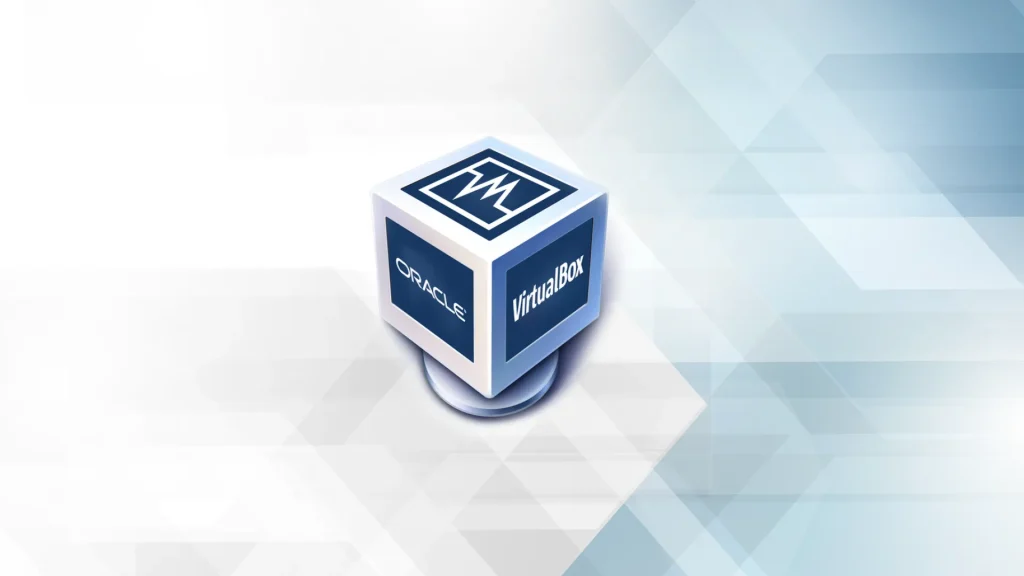
Local Area Networks (LANs) emerged in the 1960s to connect computers in a limited area. Ethernet became dominant in the 1980s, allowing for higher data rates. Both evolved as a critical factor in corporate networks.
Computers were used autonomously by a user and connected to a printer or other peripheral devices. With the development of networking technology, Local Area Networks (LANs) were created, allowing various computers to connect and share resources, such as printers and files, among themselves. In LANs, computers were connected via Ethernet cables and used various communication protocols.
As businesses grew and the number of computers used within a company increased, the need for effective network management grew. Thus, network management systems were created to allow monitoring, configuration, and maintenance of computers and network devices within the LAN. Local management enables network administrators to have control and access to computers and devices within the network.
As technology evolves, new challenges and requirements arise for managing computers in a business environment. The development of the internet led to the need for remote management and installation of computers within a company. Network management allows for remote monitoring, configuration, updating, and maintenance of computers and devices located at various company sites.
.... and from LAN to Cloud
The evolution of technology contributed to the transition from Local Area Networks (LANs) to the cloud computing space. Cloud computing has developed as a new delivery model for services and data storage based on the internet.


Until a few years ago (and even today, as this article is being written—2023), businesses had to purchase and maintain their own servers for data storage and application operation. This required significant financial resources and posed challenges in terms of space, energy, and maintenance. However, with the rise of cloud computing, businesses now have the option to store their data and use applications via the internet.
Cloud computing provides a flexible, decentralized, and cost-effective solution for storing, processing, and managing a business's data and applications. Companies can benefit from cloud infrastructure to increase scalability, save resources, and enhance the performance of their applications.
Cloud users can access their services and data via the internet from any device with an internet connection. This means that employees can access company data and applications from anywhere in the world, enabling flexibility and remote collaboration.
Additionally, cloud computing offers increased security and resilience against system failures. Cloud providers have advanced security and backup methods to keep data secure and protected from loss or destruction. Moreover, cloud providers offer a high degree of availability and fault tolerance, ensuring that applications and data are accessible almost continuously.
Overall, the transition from PC to LAN and then to Cloud has brought multiple benefits to businesses, including simplified management of computing resources, increased flexibility, reduced costs, and improved security and performance. It is an evolution that has changed the way businesses operate and opened new possibilities for growth and innovation.
Are we all and everything ultimately interconnected in the cloud?
No, we are not all and everything interconnected in the cloud. Connection to the cloud depends on the personal choices and needs of each individual or organization. Many businesses, organizations, and individuals have moved their applications, data, and services to the cloud for reasons of flexibility, cost savings, and simplified management. However, there are also many people and organizations that still use local infrastructures and network environments to store and process their data. The choice between cloud and local infrastructure depends on various factors such as security requirements, financial constraints, adaptability, and the preferences of each individual or organization.
Additionally, there are certain cases where connection to the cloud is not feasible due to technical, security, or legal restrictions. Businesses operating in sensitive areas, such as financial services or government entities, may prefer to keep their data on local servers for security and control reasons.
Overall, connecting to the cloud is a tool available for those who desire it and who find it suitable for their needs and preferences. There are advantages and challenges in each case, and the choice depends on the environment and requirements of each individual or organization, as mentioned earlier.
From PC to Cloud
ΙΩΝΙΚΗ Cloud
Local Area Networks (LANs) emerged in the 1960s to connect computers in a limited area. Ethernet became dominant in the 1980s, allowing for higher data rates. Both evolved as a critical factor in corporate networks.
Computers were used autonomously by a user and connected to a printer or other peripheral devices. With the development of networking technology, Local Area Networks (LANs) were created, allowing various computers to connect and share resources, such as printers and files, among themselves. In LANs, computers were connected via Ethernet cables and used various communication protocols.
As businesses grew and the number of computers used within a company increased, the need for effective network management grew. Thus, network management systems were created to allow monitoring, configuration, and maintenance of computers and network devices within the LAN. Local management enables network administrators to have control and access to computers and devices within the network.
As technology evolves, new challenges and requirements arise for managing computers in a business environment. The development of the internet led to the need for remote management and installation of computers within a company. Network management allows for remote monitoring, configuration, updating, and maintenance of computers and devices located at various company sites.

.... and from LAN to Cloud
The evolution of technology contributed to the transition from Local Area Networks (LANs) to the cloud computing space. Cloud computing has developed as a new delivery model for services and data storage based on the internet.

Until a few years ago (and even today, as this article is being written—2023), businesses had to purchase and maintain their own servers for data storage and application operation. This required significant financial resources and posed challenges in terms of space, energy, and maintenance. However, with the rise of cloud computing, businesses now have the option to store their data and use applications via the internet.

Cloud computing provides a flexible, decentralized, and cost-effective solution for storing, processing, and managing a business's data and applications. Companies can benefit from cloud infrastructure to increase scalability, save resources, and enhance the performance of their applications.
Cloud users can access their services and data via the internet from any device with an internet connection. This means that employees can access company data and applications from anywhere in the world, enabling flexibility and remote collaboration.
Additionally, cloud computing offers increased security and resilience against system failures. Cloud providers have advanced security and backup methods to keep data secure and protected from loss or destruction. Moreover, cloud providers offer a high degree of availability and fault tolerance, ensuring that applications and data are accessible almost continuously.
Overall, the transition from PC to LAN and then to Cloud has brought multiple benefits to businesses, including simplified management of computing resources, increased flexibility, reduced costs, and improved security and performance. It is an evolution that has changed the way businesses operate and opened new possibilities for growth and innovation.

Are we all and everything ultimately interconnected in the cloud?
No, we are not all and everything interconnected in the cloud. Connection to the cloud depends on the personal choices and needs of each individual or organization. Many businesses, organizations, and individuals have moved their applications, data, and services to the cloud for reasons of flexibility, cost savings, and simplified management. However, there are also many people and organizations that still use local infrastructures and network environments to store and process their data. The choice between cloud and local infrastructure depends on various factors such as security requirements, financial constraints, adaptability, and the preferences of each individual or organization.
Additionally, there are certain cases where connection to the cloud is not feasible due to technical, security, or legal restrictions. Businesses operating in sensitive areas, such as financial services or government entities, may prefer to keep their data on local servers for security and control reasons.
Overall, connecting to the cloud is a tool available for those who desire it and who find it suitable for their needs and preferences. There are advantages and challenges in each case, and the choice depends on the environment and requirements of each individual or organization, as mentioned earlier.







